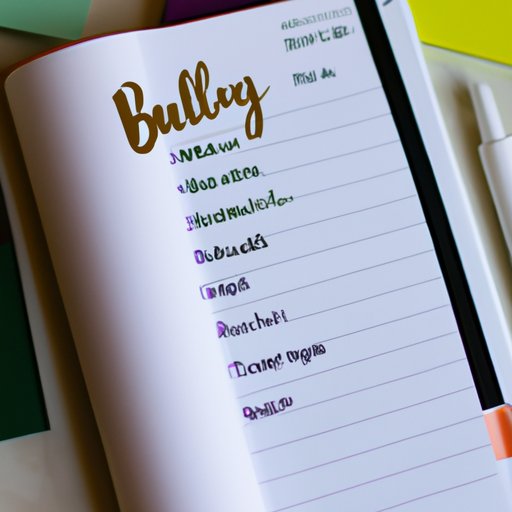Introduction
The bullet journal is an incredibly popular system for tracking tasks, organizing notes, and recording memories. It’s a versatile tool that can be used for everything from managing daily tasks to planning long-term goals. But, if you’re new to the concept of bullet journaling, it can be difficult to know where to start. This article will provide a comprehensive guide on how to start a bullet journal, including a list of supplies needed, steps for setting up pages, examples of common layouts, tips for staying organized, and ideas for creative designs.
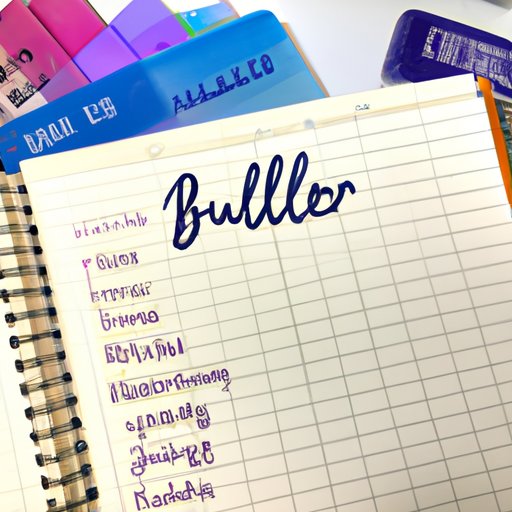
Definition of a Bullet Journal
A bullet journal, or “BuJo” for short, is a type of planner that combines the features of a to-do list, calendar, and diary. The system was created by digital product designer Ryder Carroll in 2013 as a way to help him stay organized and productive. According to Carroll, “The bullet journal is an analog system designed to help you track the past, organize the present, and plan for the future.”
Benefits of Starting a Bullet Journal
Many people find that starting a bullet journal has a number of benefits. According to a study published in the International Journal of Applied Psychology, keeping a journal can improve mental health by reducing stress and helping to regulate emotions. Additionally, bullet journals can be helpful for increasing productivity, as they provide a way to keep track of tasks and set achievable goals. Lastly, bullet journals also offer an opportunity for creative expression, as users can customize their pages with artwork, colors, stickers, and more.
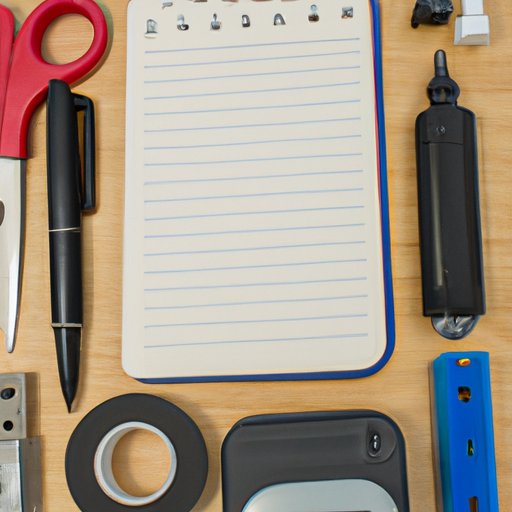
Supplies Needed to Get Started
Before you can begin setting up your bullet journal, you’ll need to gather some supplies. While there are a few essential items, such as a notebook and pen, you may also want to pick up some optional supplies like washi tape and stickers.
List of Essential Supplies
- Notebook
- Pen
- Ruler
Optional Supplies
- Washi tape
- Stickers
- Colored pens
- Highlighters
Setting Up Your Bullet Journal Pages
Once you have all the necessary supplies, you can begin setting up your bullet journal pages. There are a few different types of pages that you may want to include, such as monthly logs, collections, and future logs.
Explaining the Different Page Types
The first type of page you should create is a monthly log. This page allows you to track tasks, events, and appointments for the current month. You can also add a weekly log to each month, which breaks down the tasks for the week into smaller daily chunks. Other types of pages to consider creating include a future log, which is used for planning out events for the year; a habit tracker, which helps you monitor habits like exercising and eating healthy; and collections, which are used for gathering information, such as books to read or recipes to try.
Demonstrating How to Create Common Pages
Creating these pages is relatively simple. For the monthly log, draw a grid with seven columns and five rows and label each column with the days of the week. Then, write the month at the top of the page. For the weekly log, draw a similar grid with five columns and three rows and label the columns with the days of the week. Once you’ve drawn the grids, you can use a ruler to draw lines between the boxes to make them easier to fill in. To create collections, simply draw a box or draw a circle around each item you want to track.
Examples of Common Bullet Journal Layouts
Once you’ve set up the basic pages, you can start to get creative with your bullet journal layout. There are a variety of popular layouts that you can use as inspiration for your own design.
Showcasing Popular Layouts
One popular layout is the “weekly spread,” which is used to track tasks and appointments for the upcoming week. This layout typically includes two columns, one for listing tasks and one for noting events. Another popular layout is the “monthly spread,” which is used to track monthly goals and tasks. This layout typically includes a calendar, a list of goals, and a list of tasks. Lastly, the “brain dump” layout is used to capture ideas, thoughts, and notes. This layout typically includes a page with sections for different topics, such as work, personal, and family.
Sharing Ideas for Customizing Your Layout
If you don’t want to use any of the popular layouts, you can create your own custom layout. Some ideas for customizing your layout include adding illustrations, using colored pens to make the pages more visually appealing, and adding dividers or tabs to separate different sections. You can also use washi tape, stickers, and other decorative elements to add a personal touch to your bullet journal.
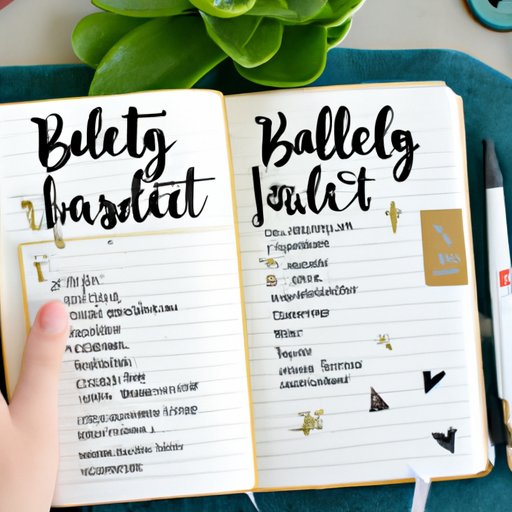
Tips for Staying Organized with a Bullet Journal
Once you’ve chosen a layout and begun filling out your pages, it’s important to develop a system for staying organized. Here are a few tips to help you stay on top of your tasks and achieve your goals.
Developing a System for Tracking Tasks
When it comes to tracking tasks, it’s important to develop a system that works for you. For example, you may want to use symbols to indicate which tasks need to be completed that day and which tasks can wait until later. You can also use color coding to differentiate between tasks, such as red for urgent tasks and blue for non-urgent tasks.
Utilizing Color-Coding and Visual Aids
Color-coding and visual aids can also be helpful for staying organized. For instance, you can use different colors to denote different categories of tasks, such as green for work tasks and purple for personal tasks. You can also use arrows and other symbols to indicate priority tasks or tasks that need to be completed in a certain order. Additionally, you can use charts and graphs to track your progress on long-term goals.
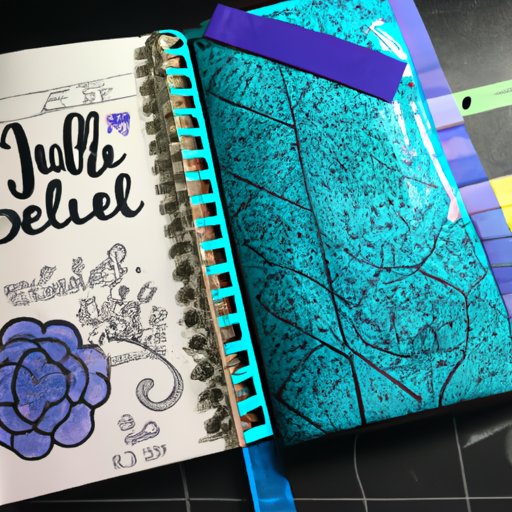
Ideas for Creative Bullet Journal Designs
In addition to staying organized, a bullet journal can also be a great outlet for creativity. Here are a few ideas for incorporating artwork and decorations into your bullet journal.
Incorporating Artwork and Decoration
One way to add a creative touch to your bullet journal is to incorporate artwork. This can be anything from doodles and sketches to collages and detailed drawings. You can also add decorative elements, such as washi tape and stickers, to brighten up your pages. Additionally, you can use stamps, stencils, and other tools to create unique designs.
Adding Variety to Your Bullet Journal Pages
Another way to make your bullet journal pages more interesting is to add variety. For instance, you can use different fonts and sizes to emphasize important information. You can also experiment with different page layouts, such as grids, lists, and tables. Finally, you can add photos and other memorabilia to create a more personalized look.
Conclusion
Starting a bullet journal can be a great way to improve your organization and productivity, as well as express your creativity. To get started, you’ll need to gather some essential supplies, such as a notebook and pen. Next, you can set up your pages and choose a layout that works for you. Then, you can develop a system for tracking tasks and utilize color-coding and visual aids to stay organized. Lastly, you can add artwork and decorations to make your bullet journal pages more interesting. With a bit of creativity and dedication, you can create a bullet journal that is uniquely yours.
(Note: Is this article not meeting your expectations? Do you have knowledge or insights to share? Unlock new opportunities and expand your reach by joining our authors team. Click Registration to join us and share your expertise with our readers.)
